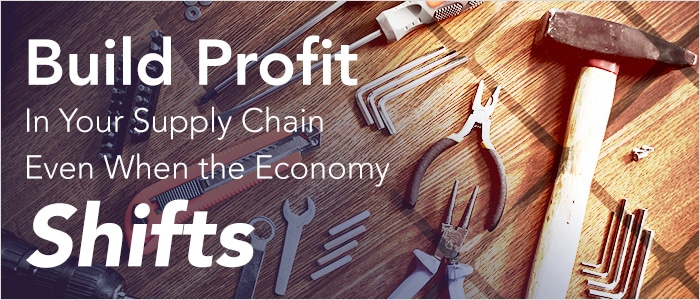4R Solutions empower retailers to make inventory decisions that lead to increased profit. AI and Machine Learning remove the guesswork from your merchandising decisions, even if your home improvement chain has tens of thousands of SKUs.
There are so many inventory decisions that impact a retailer’s profit: overstocks, out-of-stocks, markdowns and more. The decisions around inventory seem to never end. Seasoned retailers understand how two similar retail chains can have drastically different profit margins. While there are many reasons, such as brand value and marketing, much of retail’s profit comes down to their supply chain, and the degree to which it is optimized.
Supply Chain Challenges
A healthy supply chain gets in-demand products from the manufacturer to the consumer—that’s the most essential function, but it’s just the beginning. Retailers must make sure their DCs have all the high demand SKUs in stock and ready to ship. Knowing how many SKUs should be sent to each store location based on market, or reserved for online sales, is an ongoing effort. At the same time, retailers must prevent out-of-stocks, while avoiding markdowns on items that were overstocked out of precaution. This is where retailers win or lose. Knowing when and where to shift makes all the difference.
“The challenge for retailers isn’t having too little customer data. It’s having so much customer data that it’s difficult to decide what to analyze in a way that’s actionable and makes a difference in the business.”
Adding to the complexity is the rise of BOPIS (Buy Online Pick Up In-Store), BOPAC (Buy Online Pick Up At Curb), and the demand to get it right. Each of these facets of the supply chain are, in themselves, major factors that make or break retail profit.
We Know Shopper Behavior
Retail analytics is a very broad term. It’s essentially an analysis of statistics. The challenge for retailers isn’t having too little customer data. It’s having so much customer data that it’s difficult to decide what to analyze in a way that’s actionable and makes a difference in the business. Most retailers don’t have the time to analyze everything. Even if a retailer had unlimited resources, some analytics don’t deliver real-world business value.
4R has been collecting and analyzing data on shopper behavior for years. When that’s combined with the data from a retail client, 4R is able to systematically analyze the most important sets of data to help the retailer take actions that will benefit the bottom line.
The right analytics don’t just show you historical data. While historical data is helpful, we all know how quickly things can change, so historical data alone shouldn’t be used to make future purchasing decisions. The most powerful analytics don’t only tell you what happened, but what inventory decisions to make so you can know, in advance, what will happen. That’s known as prescriptive analytics.
For example, a strong housing market in one region may cause an uptick in a certain set of home improvement products. At the same time, other markets may see a decrease in exterior lighting for what seems to be an unknown reason. Prescriptive analytics consider the whole supply chain and can reveal helpful information to the retailer. This might include how many additional ladders to add to each store and DC in a specific market, and for how long. Leaving these decisions to gut instinct or basing them off of an incomplete set of data can result in lost profit.
Knowing What Will Happen
There are few supply chain solution providers today that can accurately predict the results of their product. 4R can. 4R uses proprietary algorithms to model real-world results for your retail chain. This enables you to know how much more profit you will gain when you partner with us before you ever make a purchase decision. But don’t just take our word for it. See what our other home improvement and hardware clients have to say after working with 4R.
Contact us today to learn more about how we can help your home improvement or hardware retail chain build a profitable supply chain, even in a shifting economy.


